Costs and competition head logistics advancement issues
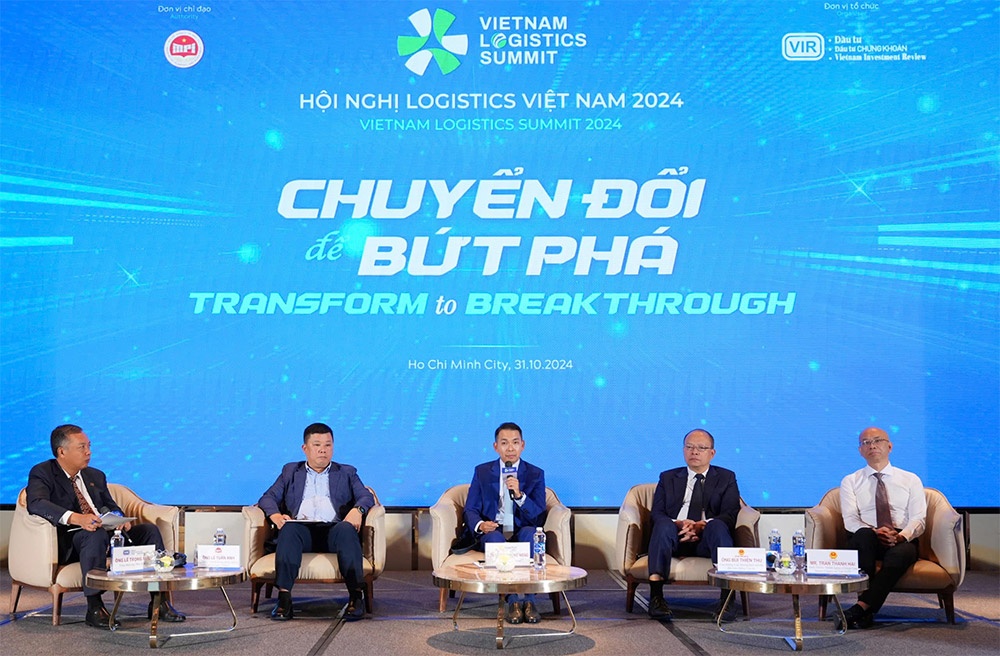 |
| Infrastructure, regulations, automation, and much more were discussed at last week’s summit, photo Le Toan |
At the second Vietnam Logistics Summit, held by Vietnam Investment Review last week in Ho Chi Minh City, Tran Thanh Hai, deputy general director of the Agency of Foreign Trade at the Ministry of Industry and Trade (MoIT), said that the key factor to reducing logistics costs was speeding up transport infrastructure and investment in developing logistics centres, inland ports, and multimodal transport.
According to Hai, infrastructure is a prerequisite for the development of the logistics industry, and many large projects have been implemented.
“Vietnam has a privately invested airport, Van Don Airport in Quang Ninh province, and has three seaports in the top 50 largest in the world, along with many new highways. The Vietnamese government is also considering investing in high-speed railways,” Hai said.
Besides transportation infrastructure, warehouse infrastructure is also being developed. Over time, the number of warehouses has increased significantly, with more advanced equipment, automatic technology applications, and higher scale of goods handling.
“Soft infrastructure such as IT, personnel, and the legal environment are also being completed. All of these factors are creating an overall picture, supporting logistics businesses in implementing their business activities,” Hai said.
Deputy Minister of Planning and Investment Do Thanh Trung said that logistics is a service industry that plays an essential role and makes an important contribution to socioeconomic development.
“The annual growth rate of Vietnam’s logistics industry averages 14-15 per cent, with a scale of $40-42 billion a year. Vietnam’s logistics businesses are growing rapidly in number, and there are now over 3,000 domestic transportation and logistics businesses and about 25 of the world’s leading logistics corporations operating,” Trung said.
He said that although Vietnam’s logistics industry has achieved positive results in recent times, in reality there are still some shortcomings because it is not synchronised.
“In order for the industry to develop, the government needs to continue improving policies and laws on logistics services to support businesses and ensure administrative reform,” Trung added.
He also said that it is necessary to focus on improving logistics infrastructure, review planning of transport infrastructure, and ensure that planning for industrial and agriculture production, import and export, and socioeconomic development is clearly mapped out.
Logistics businesses, meanwhile, need to improve their competitiveness through digital transformation, investing in technology, and producing high-quality workers.
Bui Thien Thu, director of the Inland Waterways Administration at the Ministry of Transport, said that logistics costs had reduced from 20 to around 17 per cent of GDP recently. “This is thanks to increasingly developed transportation infrastructure,” Thu said.
In particular, the inland waterway system is operating more effectively, helping to reduce logistics costs by about 20 per cent. “However, public investment in inland waterways is currently only 2 per cent. Currently, such low public investment also somewhat limits the development of inland waterways,” Thu said.
Thu believes that more synchronous and proportionate public investment in inland waterways and increasing the connection of seaports will bring great efficiency to logistics.
“Public investment will be the premise and initial investment will be from private sector. To promote the development of logistics centres, there needs to be industry and regional linkages to promote transformation in thinking, awareness, and action towards the logistics industry,” Thu added.
From a business perspective, Ben Anh, CEO of ITL Group, said that Vietnam’s logistics industry generates large emissions, especially in transportation and warehousing. “Therefore, the application of green logistics solutions by businesses plays an important role in the sustainable development of the sector,” Anh said.
Meanwhile, Do Hoang Phuong, chairman and general director of Bao Tin Trading & Logistics, said that digital transformation will help automate processes, from fleet management to tracking and logistics optimisation.
“Thanks to that, the company can reduce shipping times, limit waste, and ensure equipment arrives on schedule. At the same time, it also increases transparency and easily tracks project progress. This creates trust for customers and partners, helping the company stand out in the market,” Phuong said.
According to the MoIT, Vietnam has more than 30,000 businesses registered to operate in the logistics field. Domestic enterprises account for around 90 per cent of quantity, but only 30 per cent of the market share. Meanwhile, the number of joint venture enterprises accounts for 10 per cent and only 1 per cent are fully foreign-owned enterprises, but they account for 70 per cent of the market share.
| Cao Hong Phong, deputy CEO, Gemalink
The integration of technology into port operations and logistics has evolved from being an industry trend to a critical necessity for sustainable business development. Digitalisation and automation not only optimise operational processes and reduce costs but also significantly enhance service quality. For instance, Gemalink Port has successfully handled a 24,000 TEU container vessel, an achievement that would have been impossible without advanced IT systems and modern equipment. The adoption of technology and digital transformation for smart ports involves multiple stakeholders, including not only port operators but also import-export businesses, shipping lines, regulatory authorities, and customs. At Gemalink Port, in collaboration with Gemadept Group, we have implemented several key technologies to advance smart port operations. These include SmartPort software, which facilitates online transactions for all import-export activities at the port, and RiverGate, an application designed for booking and tracking cargo shipments. Additionally, an autogate system streamlines customs gate registration and online cargo declaration. These innovations allow Gemalink’s partners to optimise costs, reduce processing times, and enhance competitiveness. Digital transformation and the pursuit of a green port model is a long-term strategic journey. Rather than focusing solely on ambitious targets, we prioritise impactful projects that build trust with both businesses and customers. Gemadept established an environmental, social, and governance committee several years ago, focusing on practical initiatives such as annual greenhouse gas inventories, emission reduction strategies, and investment in solar-powered infrastructure in preparation for green port operations. Recently, we signed a green credit agreement with HSBC, reinforcing our commitment to sustainable development. In addition, Gemalink undertakes reforestation projects to earn green credits. Hardy Diec, COO, KCN Vietnam
To build a circular and environmentally friendly supply chain, each component in that supply chain must ensure sustainable development criteria, from raw material suppliers, manufacturers, and transport vehicles to developers of warehouse infrastructure. In July, KCN Vietnam Group announced our green building development strategy, with a firm commitment that all future factory and warehouse projects of the Group will strictly comply with international standards on environmental protection and using sustainable resources. The ready-built warehouse project in Nhon Trach 6D Industrial Park, which broke ground in late October, will be the first project in the southern region, and the second project in the country, that we deploy based on green building orientation, thanks to the application of sustainable standards and methods in construction. We strongly encourage the presence of green, zero-emission vehicles on warehouse premises, as well as natural electricity systems in future periods. KCN Vietnam’s projects prioritise the use of environmentally friendly materials and recycled materials. Specifically, the entire lighting system uses LED lights, and motion sensors are installed in the toilet and stair areas to enhance energy efficiency. At the same time, at least 75 per cent of all construction materials are committed to recycling and reuse. In addition, planning and design elements are integrated to reduce energy consumption. This includes maintaining an optimal green space ratio, using high-reflectance roofing materials, and increasingly incorporating concrete roads and grass pavers to mitigate the “heat-island” effect. KCN Vietnam is proactively looking for opportunities to cooperate with international logistics partners who have experience in operating warehouses that meet green building standards, setting up comprehensive cooperation plans with partners on green financial packages and joint projects in installing renewable energy systems to reduce costs and emissions. Bui Thien Thu, director Inland Waterways Administration Ministry of Transport
Vietnam has a diverse logistics infrastructure system. Logistics costs in Vietnam have decreased from 20 per cent around seven years ago to around 17 per cent now. Although this figure has not yet reached the global average of about 10.8 per cent, it indicates significant progress, partly attributed to the development of the transportation sector. Regarding inland waterway infrastructure, Vietnam has a substantial advantage, especially in the southern region, with approximately 3,000km in the Mekong Delta and southeast region, allowing for efficient transportation of goods to seaports. Currently, inland waterway transport contributes about 20 per cent of the total cargo transport volume in the country. However, investment costs for inland waterway infrastructure account for only 2 per cent of the total budget, while road transport takes up 50-60 per cent. Therefore, to enhance transportation efficiency, it is essential to reduce investment costs for road transport and redirect funding towards waterways, while also facilitating private investment through supportive policies. Furthermore, there needs to be better connectivity between seaports and the inland waterway system to improve cargo collection efficiency. Tax and fee policies also require enhancement; for instance, Ho Chi Minh City has implemented reduced port infrastructure fees for goods transported by water, aiding the shift in the transport structure from road to waterway, thereby minimising environmental impact and reducing road traffic accident risks. Tran Thanh Hai, deputy general director Agency of Foreign Trade Ministry of Industry and Trade
Logistics centres are a crucial part of logistics infrastructure, serving as a connecting hub linked to transport infrastructure and acting as a driver for the distribution of goods to both domestic and international markets. The development of logistics centres in Vietnam in recent years has been somewhat fragmented, reflected in the limited number, the lack of large-scale, modern centres with market impact, and inadequate support for local business links. Vietnam aspires to have logistics zones that gather multiple centres capable of handling various functions. Additionally, the concept of free trade zones is often mentioned. While they are not solely focused on logistics, they provide significant support by allowing manufacturing enterprises to establish facilities and bring in goods without being immediately subject to customs duties and certain administrative controls. These zones also permit certain operations, including logistics services such as sorting and packaging. This is an attractive feature as it promotes the transit of goods from other countries for logistics operations. The National Assembly has permitted Danang to pilot this, and Haiphong and Ba Ria-Vung Tau are expected to make similar proposals. In addition to localities with seaports, those with high cargo flows through airports and land border gates, such as Long Thanh International Airport and Lang Son Border Gate, are also ideal locations for implementing such zones. Ashish Kapur, regional head, Cargo for Southeast Asia, Cathay Cargo
We take pride in our end-to-end shipment tracking, ensuring full visibility from acceptance to delivery. Cathay Cargo’s track-and-trace service provides near-real-time updates on the airport-to-airport journey using Bluetooth data loggers, allowing us to monitor shipments and offer 24/7 proactive support. Thanks to our vendor Unilode, nearly 90 per cent of our unit load devices fleet is equipped with Bluetooth tags. We’ve also adopted the Cargo IQ Master Operating Plan, an IATA-recommended industry practice, with milestones that allow us to track the full air cargo journey from shipper to consignee. As the pilot airline for IATA’s One Record rollout, Cathay is leading digital transformation in cargo operations. One Record facilitates seamless data exchange across the supply chain, ensuring a single unified data source. Meanwhile, our dangerous goods digitalisation project enhances safety, efficiency, and traceability by centralising data and documents. We’re extending these advancements to our suppliers and ground handling partners for ecosystem-wide consistency. We also take our environmental responsibilities seriously and are committed to building a future of more sustainable operations. Dinh Thanh Son, deputy CEO Viettel Post
Viettel Post has strategically invested in key provinces such as Danang, Ho Chi Minh City, Can Tho, and Dong Nai, establishing these locations as our centralised sorting centres. In addition, we have implemented advanced conveyor systems and sorting tech at our distributed warehouses across all localities. Since the introduction of smart infrastructure, we have seen a remarkable 40 per cent increase in productivity. Our centralised sorting centres now have capacity to process up to four million parcels per day, meeting half of the current demand in Vietnam’s e-commerce. This investment is part of our proactive strategy to prepare for the anticipated growth of global e-commerce. Our primary objective is to reduce costs for consumers; therefore, we are continually exploring ways to make our services more affordable. Through our recent initiatives, we have successfully provided customers with competitive pricing and significantly improved delivery times. Previously, the average sorting time was 72 hours; now, we have reduced this to just 36 hours. This substantial decrease in processing time has accelerated delivery, tailored to the needs of our customers based on their service selections. Le Tuan Anh, director, Department of Industrial and Service Economy Ministry of Planning and Investment
In the future, there will be major changes in logistics infrastructure. The government is focusing on building the road system and submitting investment proposals for the North-South high-speed railway project. Another highlight is a smart border gate model being piloted in Lang Son. The model offers very fast customs clearance, 24/7 operation, and a low cost. In addition, the government is considering piloting duty-free zones and cross-border trade zones with countries sharing the same border. However, there are some legal obstacles to implementing such zones. For example, the zone would be developed on the land of both Vietnam and neighbouring countries. Thus, it is difficult to manage the zone according to the regulations in the case of smuggling or other violations. We are working with the Ministry of Industry and Trade and the Ministry of Transport to gradually remove obstacles to this model. In general, these projects are expected to unlock resources to drive drastic changes in the economy. There is some positive news about Vietnam’s efforts to remove legal barriers. This will be the foundation to bolster the development of infrastructure and logistics infrastructure specifically. Yap Kwong Weng, CEO, Vietnam SuperPort
We should mobilise more resources in the logistics sector and quickly clear barriers as soon as possible. Southeast Asia is developing robustly, but we should not forget India and Middle Eastern countries, which are vibrant economic development centres. What should be done to compete with these markets? Vietnam’s logistics costs remain quite high, at about 18 per cent of GDP. If we can reduce logistics costs to 10 or even 5 per cent, we can become more competitive than other markets. Thus, more companies will come to Vietnam to do business. We need to foster collaborative efforts among ministries, state agencies, and the private sector. Given that Vietnam has a good growth trajectory, the country should take into consideration this factor. We need to consider whether we create volatility or are impacted. In any situation, we need to be prepared for future volatility, including political instability, trade crises, and climate change. We have a long-term vision of 50 years, leveraging the partnership between Vietnam and Singapore and between governments. By promoting public and private partnerships, together we can increase the competitiveness of Vietnam’s logistics sector. Ryohei Oda, managing director ABeam Consulting Vietnam
To maintain an optimal supply chain, it is essential to conduct periodic assessments and, where necessary, consider restructuring. By first simulating potential changes in a digital environment, we can validate the improvements before implementation, ensuring a more effective and efficient supply chain. For continuous oversight, it is critical that executives and leadership teams monitor dynamic KPIs through dashboards, enabling automatic review actions if thresholds are exceeded. Relying on staff-generated reports can cause delays; instead, real-time data visibility on a digital dashboard allows proactive decision-making. Implementing such systems does not always require the latest tech. In many cases, existing tools like Office 365 or Google Workspace provide ample functionality to support these capabilities. At our firm, we are dedicated to helping clients maximize their current assets. With extensive experience and insights, we provide consulting services and support digital solution implementation to meet your supply chain needs. We invite you to leverage our expertise in this area. |
 | Vietnam Logistics Summit 2024 to take place on October 31 The second Vietnam Logistics Summit, themed "Transformation to Breakthrough" and organised by Vietnam Investment Review, will take place in Ho Chi Minh City on the morning of October 31. |
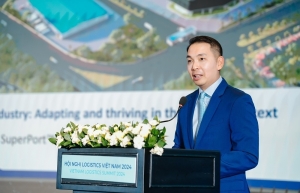 | Vietnam SuperPort poised to elevate Vietnam's logistics capabilities Vietnam SuperPort, a joint venture between YCH Group of Singapore and Vietnam’s T&T Group, is poised to enhance Vietnam’s logistics capabilities in the global supply chain. |
 | Vietnam's logistics sector confronts new challenges Experts and business leaders looked at how Vietnam can overcome challenges and unlock the potential of its logistics sector at the Vietnam Logistics Summit 2024 on October 31. |
What the stars mean:
★ Poor ★ ★ Promising ★★★ Good ★★★★ Very good ★★★★★ Exceptional
Related Contents
Latest News
More News
- Solid finish for manufacturing after volatile year (January 06, 2026 | 08:50)
- Meiko strengthens Vietnam operations with new PCB plants (January 06, 2026 | 08:49)
- Ho Chi Minh City backs $2 billion AI data centre with dedicated task force (January 06, 2026 | 08:43)
- PM sets January deadline for high-speed rail consultant (January 06, 2026 | 08:40)
- New decree spurs on PPP implementation (December 31, 2025 | 19:01)
- Global alliance develops $1 billion AI data centre network in Vietnam (December 30, 2025 | 10:08)
- Standing out in the Chinese outbound investment wave (December 29, 2025 | 10:29)
- Bright spots obvious in foreign investment mission (December 29, 2025 | 09:00)
- Ho Chi Minh City hits $8.37 billion in FDI (December 29, 2025 | 08:28)
- Vietnam and UK cooperation backs finance talent for IFCs (December 27, 2025 | 16:31)

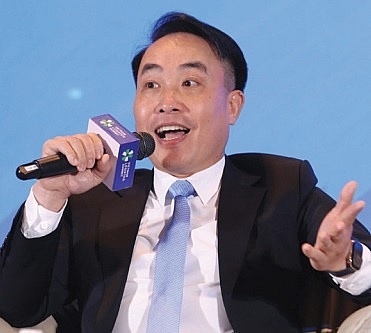
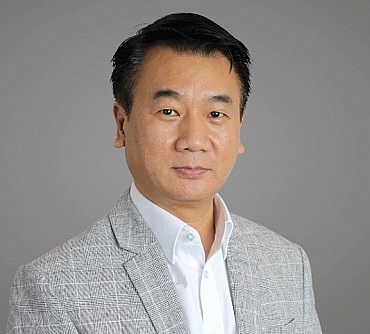
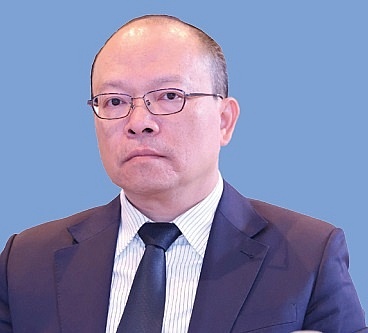
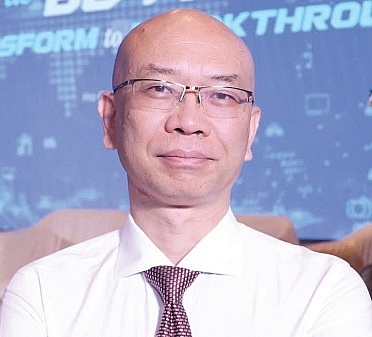
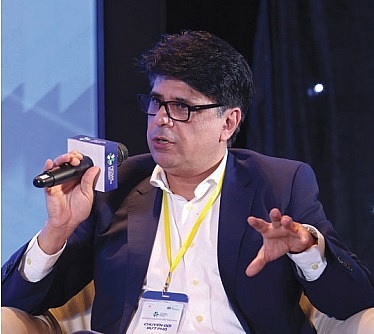
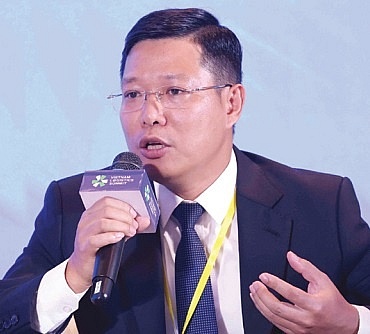
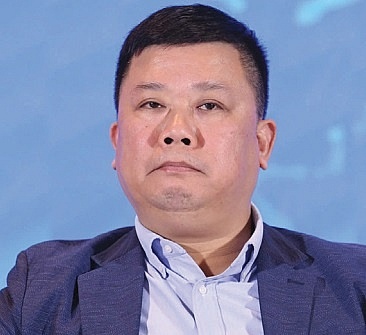
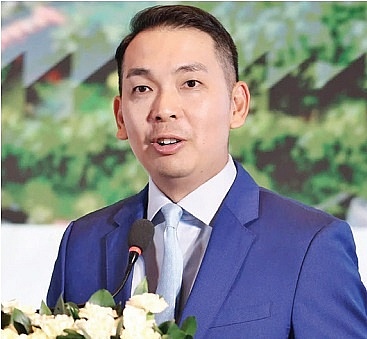

 Tag:
Tag:




















 Mobile Version
Mobile Version